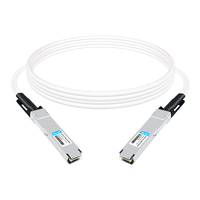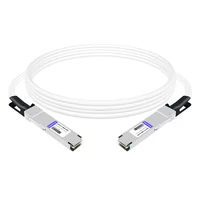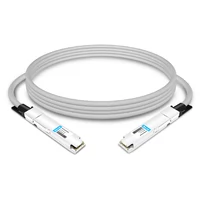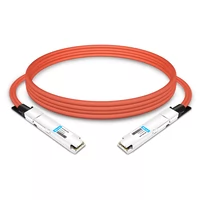The desire for quicker and more efficient connections is growing in the data transmission domain. Even as data centers increase and the demand for high-speed network solutions rises, OSFP (Octal Small Form-factor Pluggable) Direct Attach Cables (DACs) are an example of something that can be particularly useful. This article will provide a detailed explanation of what OSFP DAC technology means, including its design principles and benefits; we shall also look at its significance in fast data communication networks. It is true that these wires help solve problems with delay while still supporting increased bandwidths needed for modern applications, hence becoming an integral part of future networking infrastructures.
Table of Contents
ToggleWhat is an OSFP DAC Cable?
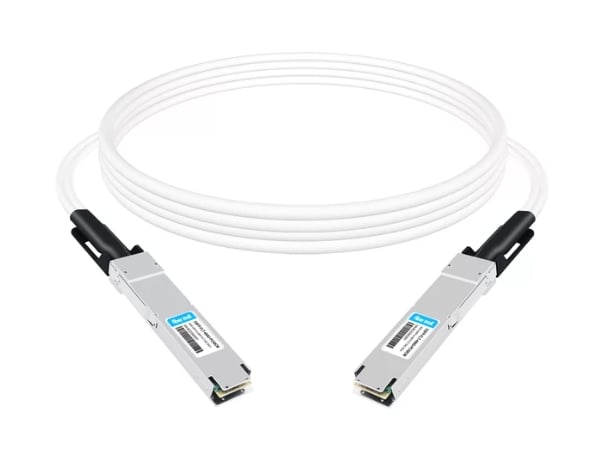
How Does an OSFP DAC Work?
An OSFP DAC works by using several channels to send high-quality data via copper conductors. They can support 25 Gbps each, and there are 8 pairs of differentials that provide 400 Gbps when combined together. Signal loss and crosstalk are minimized in the cable design so as to make communication possible over short distances with reliability and efficiency (usually between 0.5 – 2 meters). This means that an OSFP DAC connects directly to networking equipment through its OSFP ports, which eliminates optical transceiver requirement, hence enabling fast deployment within data centers.
Key Features of OSFP Direct Attach Cables
OSFP Direct Attach Cables (DAC) have several core characteristics that are key to modern network solutions:
- High Bandwidth Capacity: Every OSFP DAC supports a data rate of 25 Gbps per lane, therefore creating a whole bandwidth of 400 Gbps between eight lanes. This wide capacity is required by big data and many other applications for data centers.
- Short Reach: The optimal range for OSFP DACs is 0.5 to 2 meters, as they are designed for short-haul links. Is ideal within racks and between them since there is limited space.
- Low Latency: With little signal loss due to top-quality copper conductors and optimized cable design, OSFP DACs provide low-latency transmission needed in real-time processing systems with minimal reaction time.
- Cost-Effectiveness: They provide an economical approach to high-speed connections within data centers by not using optical transceivers. Furthermore, their ease of deployment significantly reduces labor costs associated with installation.
- Compatibility and Versatility: Designed to be connected directly into OSFP ports, this means they can work on a wide array of networking devices such as routers or switches among others. Their versatility enables diverse uses such as cloud computing and high-frequency trading.
- Robust Design: Made from quality materials; these cables are strong enough to be used in environments like data centers where temperatures change easily while still delivering reliable performance.
By incorporating these characteristics into their designs, OSFP DACs have increased their efficiency, making them popular among users who want to optimize their networking infrastructure in line with current and future data demands.
Comparing OSFP DAC with Other Transceivers
Comparing OSFP Direct Attach Copper (DAC) cables with other transceiver types like SFP+ and QSFP+, there are several factors to consider:
- Performance and Speed: With OSFP DACs, you can have data transmission speeds of up to 400 Gbps. This is much faster than what can be achieved using SFP+ transceivers which usually provide around 10Gbps. For QSFP+ modules, the rate can reach 40Gbps but still lower than those offered by OSFP DACs that were designed for more data demanding applications.
- Cost and Complexity: One thing about OSFP DACs is that they tend to be cheaper than optical transceivers since there aren’t any extra optics required hence reducing costs in general. Conversely, SFP+, as well as QSFP+ units being capable of covering longer distances come with higher price tags due to optics plus additional infrastructure costs involved.
- Use Cases and Applications: When it comes to short-haul connections within data centers (less than two meters), nothing beats an OSFP DAC. However, if your network has both short- and long-distance requirements, then SFP+ transceivers should work perfectly fine even though they are slower than their counterparts designed for this purpose. On the other hand, when dealing with medium-range distances and speeds – QSFP+ modules will do just fine.
In conclusion, what does this mean? It means that, among other things, cost-effectiveness at high speeds over short ranges within a data center environment defines an OSF PDAC as opposed to other types of transceivers such as SPF XQ or QSP SXF. Also, while selecting between different options available, you need to consider specific operational context networking needs.
What Are the Benefits of Using OSFP DAC in Data Centers?
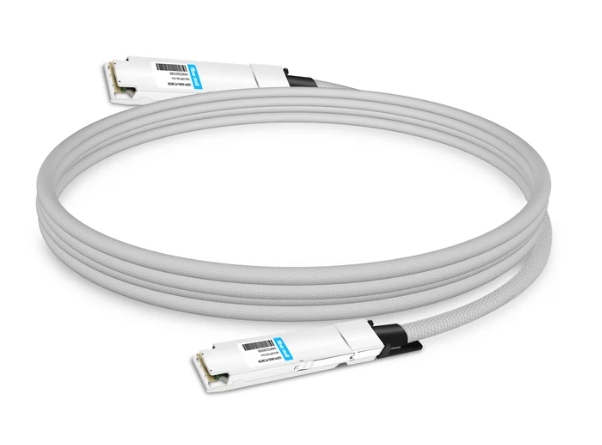
Enhanced Performance with 400G and 800G OSFP DAC
- Highly changeable data transfer speed: 400 gigabits per second can be reached by OSFP DACs, which are also capable of providing twice as much with 800G as the improvements take place and therefore meet growing data requirements within data centers.
- Low latency: The design of these optical cables is such that they create minimal delays in information transmission; this feature is essential for supercomputing as well as dealing with huge amounts of information at once.
- Energy efficiency: The power used up by OSFP DACs during one operation cycle represents their best possible consumption level–it lowers bills paid for electricity while making data centers consume less power, which has been proved to be an advantage over other similar devices intended for use in sustainable development centers where such facilities are situated.
- Scalability: These systems offer scalability by introducing higher capacity versions like 400 Gbps now and 800G later without changing too much hardware infrastructure, thus enabling them to respond flexibly towards varying network demands over time.
- Interoperability: Any network equipment can be supported using OSFP Direct Attach Cables so that when people want to upgrade or expand their networks, there’s no need to worry about whether everything will work out fine or not because everything should go smoothly without any problems arising at all.
Cost-Effectiveness of Passive Copper Cables
In high-bandwidth applications, passive copper cables like Direct Attach Copper (DAC) cables are known for being cost-effective. They offer a significant saving potential because they have lower manufacturing and material costs than optical solutions, especially in data centers where connections cover short distances. Another advantage is that these types of wires do not need external power sources, which also reduces operational expenses related to infrastructure. What’s more, they can be installed easily and quickly, so there is less need for labor hours and downtimes, thereby resulting in overall low total ownership cost. This blend of affordability and efficiency during use makes them very attractive to any organization looking forward to maximizing its funds as well as meeting the ever-increasing demand for higher capacities.
Scalability and Flexibility in Data Centers
The ability to scale and be flexible is an important part of new data center architecture that allows for the adoption of new technologies as they become available and adjusting to changes in demand. Scalable designs help ensure that businesses can continue to grow by allowing additional hardware or resources to be added while keeping everything running smoothly. This involves using modules, which are self-contained units that can be added or upgraded without causing any major interruptions.
In addition, flexibility within data centers means being able to use various IT solutions like public or private clouds along with hybrid setups so that workloads get matched up with the right amount of resources at any given time. Flexibility is further enabled by advanced virtualization techniques which not only save physical resources but also make managing virtual machines easier. Ultimately, what this boils down to is if you want a more efficient operation, then combine scalability with flexibility because it aligns your data center’s capabilities closer to realizing strategic business goals rather than just making it easier for you when things go wrong.
How to Choose the Right OSFP DAC Cable?
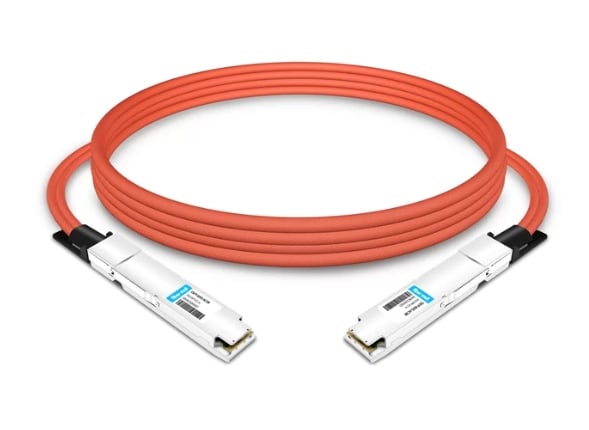
Factors to Consider When Selecting a DAC Cable
When selecting a Direct Attach Copper (DAC) Cable, there are several key considerations that should be made to guarantee optimum performance and compatibility. The following are these considerations:
- Length: This is done to prevent signal degradation by determining the cable’s necessary length to avoid its increasing attenuation.
- Data Rate: Usually, the DAC cable should support a data rate of between 10GbE and 400GbE for most applications.
- Connector Type: Confirm whether the types of connectors used in your appliances such as SFP+, SFP28, or OSFP essentially match each other or not.
- Build Quality: Evaluate how well the cables are built, for instance, if shielding has been done properly and insulation well done to help increase their lifespan and reduce interference.
- Power Consumption: Take note of power efficiency associated with DAC cables since low energy costs reduce overall data centers costs.
- Market Standards: As regards this issue, a considerable number of market standards have to be met so as the company could provide reliable performance through interoperability with existing infrastructure.
Differences Between 400G OSFP DAC and 800G OSFP DAC
The 400G and 800G OSFP Direct Attach Copper (DAC) cables differ in terms of data rate capacity, power consumption, and bandwidth. The speed at which data moves through a network is measured in bits per second or bps. It measures the number of bits sent within one second. Additionally, data rates can also be represented in bytes per second or Bps.
In this case, the data transmission rate supported by the 400G OSFP DAC is up to 400 Gigabits per second (Gbps). This makes it ideal for use in high-speed applications as well as data-intensive environments. On the other hand, its counterpart – the 800G OSFP DAC – has two times more throughput capacity, which allows it to support transmissions of up to 800 Gbps. Due to this higher value, next-generation data centers require such kinds of connections with increased bandwidth and reduced latency levels.
Furthermore, another difference between these two types of cables lies in their power consumption requirements. While both utilize electricity for operation purposes; however, since they are meant for different generations or stages of technological development; thus each has specific needs regarding energy usage efficiency.
Understanding the Role of Copper Cables
Particularly in data centers and other networking environments, copper cables are a key component of information transfer. They provide a cheap method for linking devices over short distances, enabling quick communication through different protocols like Ethernet or Direct Attach Copper (DAC). The main benefit of copper cables is that they can transmit data reliably with lower latency than some other options, such as fiber optics, in certain situations. Also, they are easy to install and maintain which makes them attractive for many businesses. However, with the increasing demand for data comes the need to use higher capacity cables like 400G or 800G, which means that bandwidth requirements have to be carefully considered and future scalability considered. In summary, knowing what role these wires play and their capabilities can help engineers design networks that are better suited to organizations’ needs.
How Does OSFP DAC Compare to QSFP56 DAC?
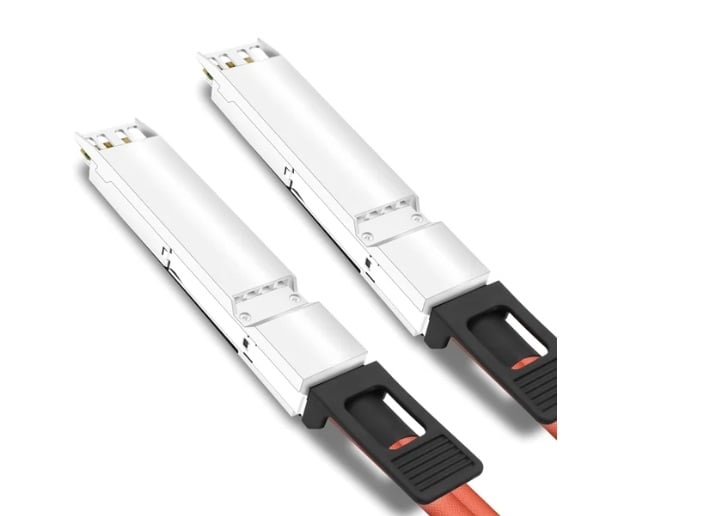
Bandwidth and Data Rate Capabilities
The octal small form-factor pluggable is a digital-to-analog converter that can carry more information than the quad small form-factor pluggable. It has a higher data rate and can send 800G through eight channels, each having 100G. The quad small form-factor pluggable is designed for connecting 200G devices together using four channels that can handle 50G each. This distinction makes the octal small form-factor pluggable better suited for environments where there is a need for greater throughput, while the quad small form-factor pluggable remains effective in applications with lower bandwidth requirements. Nevertheless, both of these cabling solutions work with previous-generation QSFP connectors, so they are versatile within existing network infrastructures.
Compatibility and Use Cases
The deployment of OSFP and QSFP56 DACs in various network environments depends on their compatibility with each other. In this case, backward compatibility is considered when designing OSFP DACs thus making them easy to integrate into existing systems that use QSFP-DD or QSFP56 ports for 200G and 400G infrastructure. This means that enterprises can increase their bandwidth capacities without necessarily changing the entire network setup.
OSFP DACs have proved to be very useful in data centers where a large amount of data is transferred within a short time. Such places require high-speed links with minimal delays due to heavy workloads, such as those found in cloud computing or HPC applications. On the other hand, QSFP56 DAC is more suitable for enterprise networks and service provider environments because they only need 200G connectivity which can support video streaming among other common applications such as real-time analytics or VNF (Virtualised Network Function) support.
Also, these two types of direct attach cables are applicable where there is a need for short-reach connections, typically ranging between 5 meters to 15 meters. As a result, it becomes possible to connect racks together within close proximity, especially when dealing with densely populated server rooms, hence saving costs involved in buying additional optical modules and patch cords required for long-distance connections between racks located far apart from each other. Therefore, network managers have the choice of either using OSFP or QSFP56 based on immediate bandwidth demands as well as future growth plans aligned with organizational strategies.
Cost and Performance Trade-offs
It is important for organizations to evaluate cost and performance trade-offs when assessing DACs since these have a significant impact on budget distribution as well as network efficiency. Because they are more sophisticated and have higher capacity, OSFP DACs normally cost more than QSFP56 ones; however, they offer better performance for applications with high data throughput needs coupled with low latency. In this case, businesses operating within environments that require quick processing of information may see such investment in OSFP DACs as reasonable, if not necessary, due to potential improvement in operational efficiency and capacity.
On the other hand, if an enterprise or service provider does not need the very wide bandwidth provided by OSFP solutions, then QSFP56 DAC represents a cheaper alternative. Its low price makes it suitable for video streaming, among others, where 200G connectivity is mostly used for real-time analytics. Therefore, whether to use OSFP or QSFP56 DAC should be based on careful consideration of current bandwidth requirements, future demand projections, and financial implications attached to each option vis-à-vis specific operational needs within the organization’s network infrastructure. Hence, striking a balance between these elements will lead to the best possible performance levels without unnecessary expenses.
What Are the Latest Developments in OSFP DAC Technology?
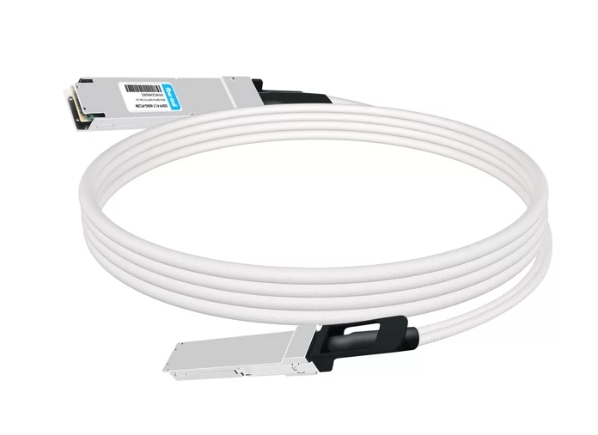
Innovations in Passive Direct Attach Copper Cables
The latest improvements to Passive Direct Attach Copper (DAC) cables have been centered around speeding up data transmission while reducing power consumption. Producers are now manufacturing cables that can operate at higher frequencies, thereby providing wider bandwidths with lower signal losses. They have also toughened the cables through better insulation materials and stricter manufacturing tolerances which improve their ability to perform consistently under different environmental conditions. On top of this, shielded twisted pairs are used in their design as a way of mitigating interference, thus making them suitable for use in places where there is a high density of data traffic. In essence, what these changes mean is that not only do they allow for quicker and more reliable connectivity, but they also save on energy used by the data centers.
Trends in 800G OSFP Breakout DAC
To answer the need for more bandwidth in enterprise networks and data centers, 800G OSFP Breakout DAC technology has emerged to be able to transmit high-speed data rapidly. According to current tendencies, people are in favor of scalable ways that can enable them to distribute their high-speed links over several interfaces effectively. This is done by the use of breakout capability that allows one 800G connection to split into many lower speed connections, thus making already existing infrastructure flexible and reusable as well. Furthermore, cooling is still a major concern when it comes to densely populated areas; therefore, manufacturers have started working towards making them consume less power while at the same time optimizing thermal performance. Moreover, smaller sizes, together with better toughness, have been achieved through the integration of advanced materials and engineering techniques, thereby allowing for their long-term use under harsh conditions, even so far away from sight, like underground cable ducts or sea beds. These are just but a few examples among many other trends which will shape tomorrow’s network connectivity solutions as the industry keeps growing rapidly day after day.
Future Prospects for OSFP DAC in High-Speed Networking
The future of high-speed network connectivity lies in OSFP DAC technology which is expected to grow significantly as the need for larger bandwidths and lower latencies increases. OSFP DACs are projected to become faster as the amount of data generated continues to rise thanks to IoT, cloud computing and AI-based applications; it may achieve around 1.6 Tbps soon or even more than that in years ahead. Manufacturers should invest heavily in research and development activities targeting improving signal integrity while minimizing electromagnetic interference since this will allow performance scalability with rising data rates.
Moreover, if intelligent management functionalities get integrated into these devices, much smarter networks can be built where monitoring becomes easier thus fault detection leading to better operational reliability. As a matter of fact, manufacturers must ensure backward compatibility during the transition from 400Gbps (which is becoming mainstream) up to 800Gbps, as well as any other future standards that may follow suit, but this will only happen through close collaboration between different entities involved in setting such benchmarks or guidelines towards achieving them within specified timeframes. Standardization bodies, together with various network providers too, have roles to play so that widespread adoption can be facilitated. Therefore, enterprises need not wait until their competitors surpass them by implementing OSFP DAC technology, as it forms the foundation for next-generation data centers and corporate networks alike.
Reference Sources
Frequently Asked Questions (FAQs)
Q: What does OSFP DAC mean?
A: An OSFP DAC (Direct Attach Cable) is a high-speed passive or active cable assembly used to directly connect two ports of an OSFP (Octal Small Form-factor Pluggable) in data centers and high-performance computing environments.
Q: Is OSFP to OSFP DAC better than other high-speed cable assemblies?
A: Comparing with optical transceivers, an OSFP to OSFP DAC has lower latency and power consumption which makes it the most economical choice for short-distance links inside data centers.
Q: What are some benefits of using a passive DAC cable?
A: Passive options like those offered by the OSFP passive have low cost but they also offer reliable performance over short distances while consuming very little power making them perfect for connections within racks.
Q: Can 400G data rates be supported by OSFP DACs?
A: Yes, 400G and higher speed data rates are supported by 400G OSFP to OSFP DAC which meets the requirements of modern bandwidths in data centers.
Q: How does a 100G QSFP28 DAC differ from a 200G QSFP56 DAC?
A: Four 25G lanes are used by the former which allows for up to 100 Gbps whereas this amount can go up to 200 Gbps with four 50G lanes on the latter thereby providing twice as much bandwidth with the same form factor.
Q: In what ways can the use of OSFP to OSFP DAC cables be most advantageous for certain applications?
A: The principal area of benefit for OSFP to OSFP DAC cables is in data centers and high-performance computing environments where there is need for low latency, fast speed and cost effective links.
Q: How does 400G QSFP-DD perform when compared with NDR OSFP in terms of performance?
A: Both 400G QSFP-DD and NDR OSFP offer high data rates required for advanced networking. However, depending on specific data center requirements, NDR OSFP might have a higher density as well as be more efficient than any other cable in some situations.
Q: Do active options exist with regard to OSFP DACs?
A: Yes, there are active options which include 800G LPO OSFP or even 400G AEC that provide better performance over longer distances by using active signal processing to maintain high levels of data integrity throughout.
Q: Which standards must be followed by OSFP DACs?
A: When it comes to different networking devices and infrastructures so that they can work together smoothly without any integration problems while at the same time delivering optimal results; therefore IEEE standard is necessary for good interoperability among these systems.
Q: Why are 400G OSFP to OSFP connections important in modern data centers?
A: These connections play a critical role because they deliver the required bandwidth capacity needed for transmitting large volumes of information within very short periods, supporting continuous growth rates associated with current storage as well as processing demands.
Related Products:
-
 OSFP-FLT-400G-PC50CM 0.5m (1.6ft) 400G NDR OSFP to OSFP PAM4 Passive Direct Attached Cable, Flat top on one end and Flat top on other
$110.00
OSFP-FLT-400G-PC50CM 0.5m (1.6ft) 400G NDR OSFP to OSFP PAM4 Passive Direct Attached Cable, Flat top on one end and Flat top on other
$110.00
-
 OSFP-FLT-800G-PC2M 2m (7ft) 2x400G OSFP to 2x400G OSFP PAM4 InfiniBand NDR Passive Direct Attached Cable, Flat top on one end and Flat top on the other
$300.00
OSFP-FLT-800G-PC2M 2m (7ft) 2x400G OSFP to 2x400G OSFP PAM4 InfiniBand NDR Passive Direct Attached Cable, Flat top on one end and Flat top on the other
$300.00
-
 OSFP-800G-PC50CM 0.5m (1.6ft) 800G Twin-port 2x400G OSFP to 2x400G OSFP InfiniBand NDR Passive Direct Attach Copper Cable
$105.00
OSFP-800G-PC50CM 0.5m (1.6ft) 800G Twin-port 2x400G OSFP to 2x400G OSFP InfiniBand NDR Passive Direct Attach Copper Cable
$105.00
-
 OSFP-800G-AC3M 3m (10ft) 800G Twin-port 2x400G OSFP to 2x400G OSFP InfiniBand NDR Active Copper Cable
$600.00
OSFP-800G-AC3M 3m (10ft) 800G Twin-port 2x400G OSFP to 2x400G OSFP InfiniBand NDR Active Copper Cable
$600.00

